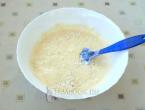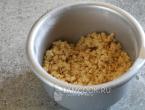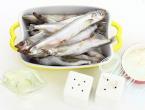What to drink in winter in Finland? Christmas drink glögi. Sometimes I think Gleg non-alcoholic recipe
Glögg, also known as Scandinavian mulled wine, glogg or glögg, is a traditional Scandinavian warming drink that is a staple of Christmas and New Year celebrations in Sweden, Denmark and Norway. The alcoholic version of the drink is most often prepared on the basis of red wine, with the addition of strong alcohol, while the non-alcoholic version is made on the basis of cranberry or blackcurrant juice.
The composition and method of preparing the drink is partly similar to preparing mulled wine, but has its own characteristics. In particular, unlike mulled wine, glög, as a rule, is prepared in advance, and it is necessary to insist on spices for at least a day, and sometimes for several weeks - this gives the drink a deep, colorful and multifaceted spicy taste. Also, dried fruits are often used in the preparation of the drink, and for serving, a portion of nuts and raisins is certainly added to each glass, which complement the taste of the drink and serve as both a decoration and a snack.
Today I propose to prepare a fragrant, festive non-alcoholic glög based on blackcurrant juice, with the addition of traditional spices, almonds and raisins. Shall we begin?
In order to prepare non-alcoholic glög, you will need the ingredients listed in the list.

Cut the zest of 1 orange into small pieces. Cut the ginger root into thin slices.

Measure sugar into a saucepan. Add ginger, orange zest, spices and 1 tbsp. raisins

Pour in 100-150 milliliters of juice. Stir, bring the mixture to a boil and cook over low heat for 5-7 minutes.

Then pour in the remaining juice. Over low heat, bring the drink to almost a boil (85-95 degrees) and immediately turn off the heat.

At this stage, the drink is already tasty and, in principle, it can be served, but if time allows, cool the drink completely and let it brew for 1-24 hours, placing it in the refrigerator in an airtight container. You can infuse non-alcoholic glög for a longer period of time - up to 7 days. In this case, the drink must be poured into a sterilized container and hermetically sealed.
Before serving, heat the drink without letting it boil and strain.

To serve, place a pinch of raisins and peeled almonds in the bottom of each cup or glass.

Pour in a portion of the hot drink. Decorate the glasses according to your mood and serve the drink to the table.

Glög is ready.

Very soon there will be no less Russian tourists in Finnish border and resort towns than there are Finns themselves. Since Finns have very specific traditions for celebrating New Year and Christmas, and holiday and seasonal food and drinks are a good way to get into the holiday spirit, we wanted to talk about what Finns eat and drink in winter. This time we’ll talk about hot glögi or just glög. Despite the similar name, glög is not exactly mulled wine or grog, since glög does not always contain alcohol, although in other respects all these drinks are very similar. Finnish glög from the supermarket is usually juice (grape, blackcurrant or apple) flavored with spices - most often cloves, cinnamon and ginger. Preparing glögi is simple - heat the juice with spices over a fire and add almonds and raisins.
Manteli almonds and rusina raisins are added to the glögi when the drink is heated.
They drink a hot drink from small mugs, often made of transparent glass. It’s good to take glögi for a walk in the winter in a thermos - hot and sweet, children will definitely like it. The “adult” version of glögi involves adding strong alcohol, such as rum or vodka, to the finished drink.

There is a very large selection of glöga in stores, especially in winter. Click on the photo to enlarge the image.
In stores we saw many different versions of ready-made glögi - from juice concentrate with spices, which must be diluted with water before cooking, to glögi prepared with the addition of dry red wine. In any case, it would be a good idea to make sure that the pack or bottle states that the product does not contain alcohol. Similarly in bars and cafes - check with the waiter what kind of glögi you will order. Non-alcoholic in Finnish alkoholiton, alkoholiton.
Glögi is inexpensive - from 2-3 euros per liter of ready-made juice with spices and about 1.5 euros for a bag of almonds with raisins. Traditionally, glög is drunk with ginger cookies piparkakku, piiparit piparkakku, which we will talk about later.
The fact that not every Finnish glög contains alcohol is probably good, since by purchasing such non-alcoholic glög in a store, you can treat it to everyone, including children, who will know that New Year's holiday drinks do not necessarily have to be alcoholic. Probably, Finnish non-alcoholic mulled wine is the result of the Finnish government's policy to combat drunkenness. no less than ours, and the Finnish government is fighting against excessive alcohol consumption, not without success, by introducing restrictive measures on the sale of alcohol. For example, in Finland, alcoholic beverages above 5% alcohol cannot be bought in regular supermarkets, but only in specialized government stores whose opening hours are:
Another advantage of non-alcoholic glögg is that you can take it across the border as much as you want and mix “normal” mulled wine at home :)
Below you can watch a program about Finnish stores selling strong alcohol "Alko".
Gleg is an alcohol-based warming drink, which is an analogue of mulled wine in the countries of the Scandinavian Peninsula, Denmark and Estonia. Residents of these countries consider gleg the official drink of Christmas and winter celebrations. It is served in cafes and restaurants, sold on tap at street stalls, and prepared at home for pleasant gatherings.
History of the drink
Even during the Middle Ages, Europeans became accustomed to warming themselves with hot alcoholic drinks based on wine and rum. According to one version, the appearance of gleg in Scandinavian countries is associated with the low quality of local wine. They tried to mask its taste using all kinds of additives - cardamom, cloves, cinnamon and citrus peels.
Legend connects the appearance of the drink with the name of the Swedish Duke Johan III. On the eve of Christmas 1562, the ruler brought his young wife, Princess Catherine of Jagiellon, to his home. A native of Poland, where the climate is much milder and warmer than the Scandinavian one, she could not keep warm in the northern country. The servants served her warmed red wine, seasoned with spices and honey.
Starting from the 17th century, the drink became popular among the people; people tried to use it to warm up during the cold season. Hot wine received its current name only at the end of the 18th century, and before that it was known as “hippocras”.
In the middle of the 19th century, the price of sugar dropped significantly, so it replaced the usual honey in the drink recipe. According to the new technology, a loaf of sugar was hung over a cauldron with wine and spices. It was poured with a small amount of vodka or set on fire. As the drink brewed, melted sugar flowed into it, giving the mixture a certain taste and aroma. This is where the name “glödga” comes from, which translated from Swedish means “to heat up”, “to anneal”.
Nowadays, Scandinavians begin actively preparing the drink from December 13th. This date falls on the day of Saint Lucia, which marks the beginning of the winter holidays.

Ingredients and recipes
Unlike grog, which is based on rum and strong tea, grog is made from wine with the addition of spices, nuts and dried fruits. The classic recipe includes dry or semi-dry red wine. The most commonly used additives are cardamom, cloves, cinnamon and ginger. Additionally, the drink is flavored with lemon and orange peels, raisins and peeled almonds.
First, spices are boiled in water, then red wine is added, and before serving, strong alcohol is poured into the mixture - vodka, port, Madeira or brandy.
To obtain the “golden” variety of gleg, white wine, apple juice and cider are used.
In general, there are many varieties of warming drinks. There is even a non-alcoholic gleg, which is especially loved by residents of Finland. Its components are the same as in the classic recipe, only the wine is replaced with high concentration grape or blackcurrant juice.
Strong and non-alcoholic versions of gleg are sold ready-made in supermarkets in Scandinavian countries. You can also purchase special mixes of spices, nuts and dried fruits for making gleg at home. Pour the spices from the bag into the wine, heat the mixture without allowing it to boil, and pour into glasses.

How to serve gleg
In Finland, Sweden and Denmark, the drink can be purchased right in the middle of the street - it is poured into plastic cups, thermoses and drunk in the cold. The drink is served with gingerbread cookies, sweet saffron buns and blue cheese.
It is recommended to leave the prepared non-alcoholic gleg for 15-20 minutes. The classic version of the drink is consumed immediately, but before serving, 50-100 ml of vodka is mixed into the composition. Serving gleg looks colorful using copper teapots with legs - a burning candle is placed under them, and the drink retains its temperature for a long time. It is better to pour into vintage mugs; you can serve in glasses or cups, placing raisins and almond slices on the bottom. In this case, the drink is served with a spoon.
Skilled bartenders make the process of making glug a real show. Before adding sugar and spices, they light the wine with a long match and let the liquid burn for about a minute.
Gleg producers are constantly experimenting with the drink, offering customers entire series with berry and fruit flavors.




